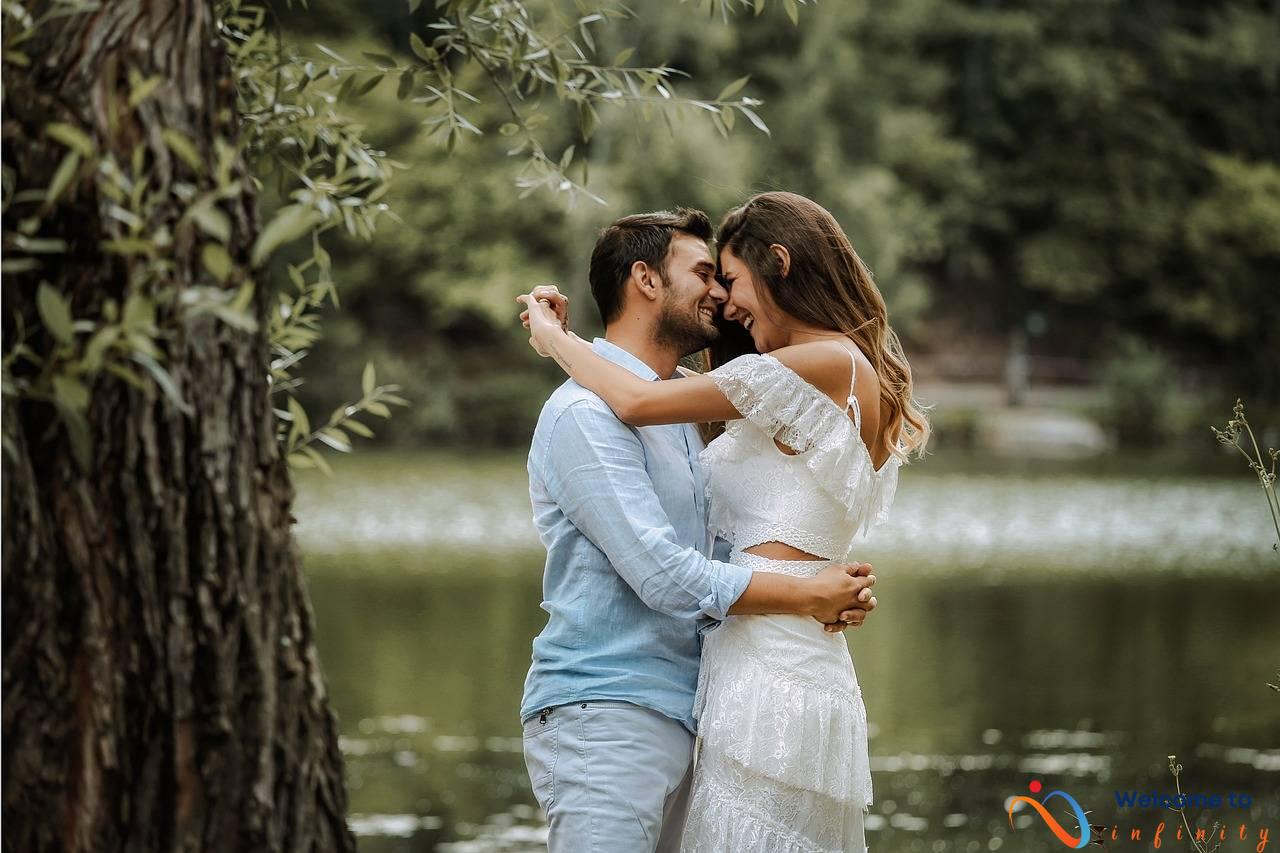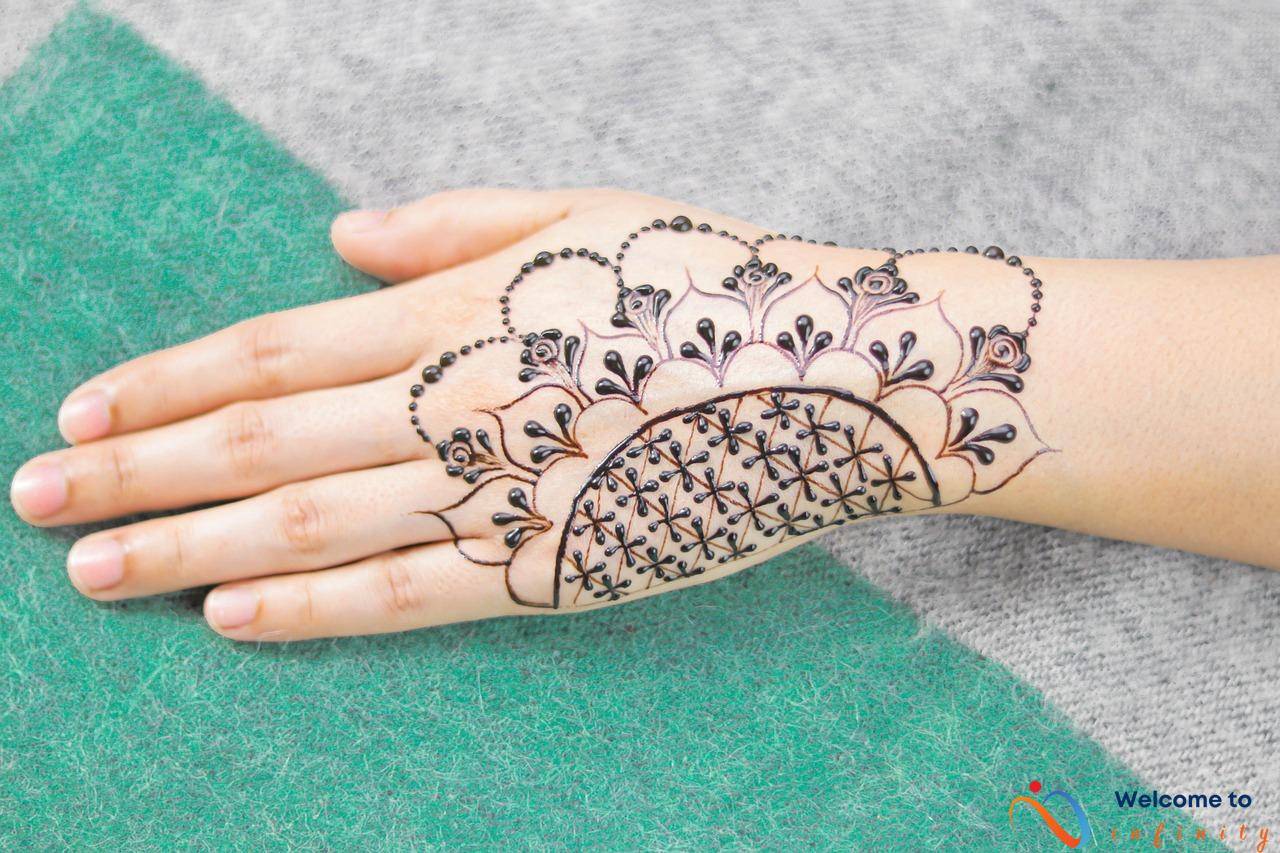If you're considering getting a flower tattoo, it's important to know the hidden symbolic meanings behind different flowers. Each flower represents something unique and can help you express yourself or convey a message through your ink. Let's take a closer look at some popular flower tattoos and their meanings.
Roses are one of the most popular flowers used in tattoos, and each color has a different meaning. Red roses are often associated with love and passion, while yellow roses symbolize friendship and joy. Pink roses represent gratitude and admiration, white roses are associated with purity and innocence, and black roses are often used for mourning or as a symbol of death.
The lotus flower is known for its spiritual and cultural significance. In Buddhism, it represents purity and enlightenment, while in Hinduism it is a symbol of creation and rebirth. In Chinese and Japanese cultures, the lotus is a symbol of purity and harmony. A traditional lotus tattoo usually features the flower with closed petals, while a watercolor lotus tattoo often features bright and vibrant colors.
Cherry blossoms represent the beauty and fragility of life. These flowers hold great significance in Japanese culture, as they are a symbol of spring and renewal. Sakura is the Japanese word for cherry blossom, and the flower is often represented in Japanese art and clothing. A cherry blossom tattoo can represent beauty, love, and the transience of life.
In Chinese and Japanese art, the peony is a symbol of wealth, prosperity, and good fortune. This flower has been used in traditional medicine for centuries and is believed to have healing properties. A peony tattoo can represent beauty, wealth, and prosperity. Traditional peony tattoos often feature the flower with intricate detailing, while watercolor peony tattoos can feature a more modern and abstract design.
Now that you know the hidden meanings behind some popular flower tattoos, you can choose the perfect design to express yourself and add some meaningful ink to your body.
Rose Tattoos
Rose tattoos are one of the most popular floral designs among tattoo enthusiasts, and each color rose holds different meanings. While red roses are commonly associated with love and passion, pink roses symbolize grace and admiration, and white roses represent purity and innocence.
Yellow roses are often linked to friendship, while orange roses signify enthusiasm and excitement. Black roses are a symbol of death, and blue roses are associated with mystery and the unattainable.
When considering a rose tattoo design, the color choice plays a crucial role in the overall message the tattoo conveys. Many people choose to incorporate a mix of colors in their rose tattoos, giving a nod to multiple meanings and symbolisms.
Ultimately, the meaning behind a rose tattoo design is unique to the individual who wears it. Often, people choose rose tattoos as a tribute to someone they love or to represent a part of their personality. Whatever the reason may be, a rose tattoo is a timeless and beautiful choice.
Lotus Tattoos
Lotus tattoos have a rich spiritual and cultural significance rooted in various traditions. In Buddhism, the lotus symbolizes purity, enlightenment, and detachment from materialism. The lotus flower grows in muddy waters but remains untouched and pure, representing the idea of rising above one's circumstances and achieving spiritual liberation. In Hinduism, the lotus is associated with the god Vishnu and goddess Lakshmi, and is seen as a symbol of divine beauty, purity, and fertility.
Aside from its spiritual symbolism, lotus tattoos also have cultural significance in different parts of the world. In China, the lotus represents harmony and peace, while in Japan, it symbolizes purity, love, and enlightenment. In ancient Egypt, the lotus was a symbol of rebirth and creation, as it was believed to emerge from the primordial waters at the beginning of time.
Lotus tattoos come in different styles and designs, showcasing the versatility of this iconic flower. Traditional lotus designs feature intricate, symmetrical patterns and bold lines that highlight the beauty and simplicity of the flower. Watercolor lotus tattoos, on the other hand, use soft, pastel colors and gradient shading to create a dreamy, ethereal effect.
Whether you are drawn to lotus tattoos for their spiritual significance or their aesthetic appeal, the lotus flower is a timeless symbol of beauty, purity, and enlightenment. So if you are considering getting a tattoo, a lotus design might just be perfect for you.
Traditional Lotus
Traditional Lotus
The lotus flower holds great significance in several religious and cultural traditions, making it a popular choice for tattoos. In Buddhist tradition, the lotus symbolizes purity, enlightenment, and self-regeneration. The opening and closing of the lotus flower symbolizes the cycle of birth, death, and rebirth.
Similarly, in Hindu tradition, the lotus is a symbol of divine beauty and purity. It is associated with gods and goddesses like Lakshmi, Brahma, and Vishnu. According to Hindu mythology, the lotus emerged from the navel of Lord Vishnu, portraying creation and spiritual enlightenment.
In Chinese culture, the lotus symbolizes purity, perfection, and harmony. It also represents the summer season and is believed to bring good fortune and prosperity. Similarly, in Japanese culture, the lotus is associated with purity, enlightenment, and rebirth. It is often depicted alongside koi fish in traditional Japanese art, representing the struggle and triumph of life.
Lotus tattoos often portray these traditional meanings and are often inked in hues of pink, purple, or blue to depict enlightenment, beauty, and transcendence. However, the modern take on lotus tattoos allows for various interpretations, and they are often depicted in watercolor hues or incorporated into more abstract designs.
Overall, lotus tattoos are not only aesthetically pleasing but also hold deep religious and cultural significance. They are an excellent way to signify one's spiritual beliefs or life journey.
Watercolor Lotus
While traditional lotus tattoos feature intricate linework and shading, the modern take on lotus tattoos is all about watercolor designs. These tattoos often feature bright, bold colors that resemble a watercolor painting.
Watercolor lotus tattoos represent the ability to overcome obstacles and find inner peace. The lotus flower is known for its ability to rise above the murky waters and bloom into a beautiful and pure flower. The watercolor style adds a sense of fluidity and movement to the design, emphasizing the idea of constant growth and change.
Additionally, watercolor lotus tattoos can also represent individuality and creativity. Because they are often custom-designed and unique, they reflect the wearer's personal style and interests. The use of bold colors and brushstrokes can also represent artistic expression and freedom.
- Overall, watercolor lotus tattoos are a beautiful and modern twist on a traditional tattoo design. Whether you're looking to represent spiritual growth or express your own creativity, a watercolor lotus tattoo is sure to make a statement.
Cherry Blossom Tattoos
Cherry blossom tattoos are a popular floral tattoo design that holds a significant cultural meaning in Japan and many other countries worldwide. In Japan, cherry blossoms, also known as sakura, are a symbol of life's fragility and beauty, reminding people to cherish every moment. They are a popular motif in traditional Japanese art, such as ukiyo-e prints and kimono patterns.
The cherry blossom season, known as hanami, is a significant cultural event in Japan, where people gather under the cherry blossom trees to drink, eat, and celebrate the arrival of spring. The breathtaking view of the flowers in bloom is a symbol of renewal and hope in Japanese culture.
Cherry blossom tattoos are popular among men and women as they represent beauty and feminine energy in Eastern cultures. The flowers' delicate nature and short lifespan remind us of the transient nature of life, leading to a sense of mindfulness and appreciation of every moment.
In addition to its cultural significance in Japan, cherry blossom tattoos are also popular in other countries worldwide, such as Korea and China. In Korea, the cherry blossom symbolizes love, femininity, and purity, while in China, it represents female beauty and power.
In conclusion, cherry blossom tattoos represent not only the beauty and fragility of life but also the cultural significance and rich symbolism of the cherry blossom in various Eastern traditions. Whether you choose a traditional Japanese or modern watercolor design, a cherry blossom tattoo is a timeless and meaningful choice for anyone looking to embrace the beauty of nature and Eastern culture.
Sakura vs Cherry Blossom
When it comes to cherry blossom tattoos, there is often confusion over the difference between cherry blossom and sakura tattoos. Sakura, which translates to “cherry blossom” in Japanese, is actually just the Japanese word for cherry blossom. However, the term is often used to describe a specific type of cherry blossom tattoo that is traditionally Japanese in style.
Cherry blossom tattoos, on the other hand, can refer to any type of tattoo featuring the beautiful blooms of the cherry tree. While cherry blossoms are commonly associated with Japan, they are also a popular symbol in Chinese and Korean cultures.
In terms of symbolism, both cherry blossom and sakura tattoos represent the fleeting and fragile nature of life. They remind us to appreciate the present moment and cherish each day as if it were our last. However, there are some subtle differences in meaning between the two.
Sakura tattoos are typically associated with springtime, renewal, and new beginnings. They are often used to represent the beauty of life's fleeting moments, as cherry blossoms only bloom for a short period each year.
Cherry blossom tattoos, on the other hand, can have a wider range of meanings depending on the context in which they are used. They can represent love, beauty, hope, and the impermanence of life. They are often used to commemorate a significant event or to honor a loved one who has passed away.
Overall, whether you choose to get a cherry blossom or sakura tattoo, both are beautiful and meaningful choices that are sure to turn heads and spark conversation.
Cherry Blossom Festival Tattoos
The cherry blossom festival, or sakura matsuri, is a traditional Japanese event that celebrates the beauty of the cherry blossom tree. This festival has been incorporated into many cherry blossom tattoos, showcasing the delicate petals of the tree and its cultural significance.
Cherry blossom festival tattoos incorporate traditional Japanese elements such as koi fish, geishas, and samurais, all surrounded by the cherry blossom tree. Many people opt for a sleeve featuring a cherry blossom tree in full bloom, with each petal and branch delicately detailed. These tattoos can also feature the festival itself, with Japanese lanterns and street food surrounding the tree.
The cherry blossom festival has also become a major tourist attraction in Washington D.C., where the National Cherry Blossom Festival takes place every year. This event has also been incorporated into cherry blossom tattoos, with the Washington Monument and Tidal Basin adding to the already beautiful tree.
Overall, cherry blossom festival tattoos hold a special meaning for those who appreciate the beauty and cultural significance of the cherry blossom tree. It represents new beginnings, the fleeting nature of life, and the appreciation of beauty that can be found in every moment. Whether it's celebrated in Japan or Washington D.C., the cherry blossom festival remains a beloved tradition that will continue to inspire meaningful tattoos for years to come.
Peony Tattoos
Peony tattoos have been a popular choice in both Eastern and Western cultures for their symbolic meaning. In Chinese and Japanese art, the peony represents wealth, honor, and feminine beauty. It is believed that the peony flower is a representation of the queen of flowers, symbolizing elegance, grace, and royalty.
Traditional peony tattoos usually feature the flower in shades of pink and red, with intricate details and shading. Watercolor peony tattoos are another popular choice, with bright and bold colors blending together to create a unique design.
In Chinese culture, the peony is also a symbol of love and affection. According to folklore, an emperor once gifted his favorite courtesan a garden full of peonies. It is said that the flower bloomed every season as a testament to their undying love. Therefore, peony tattoos can have different meanings depending on the culture, such as love and passion.
The peony is also known for its medicinal properties in traditional Chinese medicine, where its roots and petals are used to treat various ailments. Therefore, the peony tattoo can also represent good health and healing.
Overall, the peony tattoo is a beautiful and meaningful choice for those who admire the elegance and grace of this flower, as well as its cultural and folkloric significance.
Traditional Peony
The peony flower has a deep-rooted cultural significance in China and Japan. In Chinese art, the peony symbolizes honor, wealth, and prosperity. It is often referred to as the “king of flowers” and is a popular motif in Chinese paintings and embroidery. In Japan, the peony is also highly valued and is associated with good fortune, romance, and beauty.
In Chinese art, the peony is often depicted alongside other symbols of wealth and status, such as goldfish and jade. It is a popular theme in Chinese silk embroidery, which is known for its intricate designs and vibrant colors. In Japan, the peony is often featured in traditional paintings and is a popular image on kimono and other textiles.
The peony's cultural significance is also reflected in traditional Chinese and Japanese gardens, where it is often included alongside other symbolic plants and structures. In Chinese gardens, the peony is often paired with rocks, which are seen as a symbol of stability and longevity. In Japan, the peony is often included in tea gardens, where it is appreciated for its beauty and fragrance.
Overall, the peony has a rich cultural significance in Chinese and Japanese art that spans centuries. Its beauty and symbolic meaning have made it a popular flower tattoo choice for those looking to represent prosperity and good fortune. Whether depicted in traditional or modern designs, the peony continues to be a powerful symbol of beauty and wealth.
Watercolor Peony
Peony tattoos have become increasingly popular in recent years as they are not only aesthetically pleasing but carry strong meanings and symbolisms. The watercolor peony tattoo is one of the modern takes on this classic design, favored for its softness and delicacy.
The watercolor technique gives the impression of brushstrokes and splashes of color, bringing a fresh and contemporary twist to the traditional peony flower. It gives the tattoo a dreamy, romantic quality that complements the flower's natural beauty.
The watercolor peony tattoo not only looks beautiful but holds deep meanings and symbolisms as well. These tattoos often represent transformation and growth, as the peony is a flower that blooms in late spring and early summer. It is seen as a reminder to embrace change and to have patience as beautiful things take time to develop.
The watercolor peony tattoo can also symbolize femininity, grace, and elegance. The use of soft and fluid colors infuses the tattoo with a gentle and subtle energy that reflects these qualities. It can be a tribute to the beauty and strength of being a woman.
If you're considering getting a watercolor peony tattoo, it's essential to choose the right color scheme for your design. The traditional paper peony comes in various shades of pink, red, and white, and each color has a different significance. Pink peonies represent love, while red peonies symbolize passion and desire. White peonies signify purity and innocence.
Ultimately, the watercolor peony tattoo is a beautiful and meaningful piece of body art that holds great value for anyone looking to symbolize growth, femininity, and beauty. Its soft and delicate nature is perfect for anyone looking for a romantic and dreamy design that exudes elegance and grace.
Peony as a Symbol of Wealth
The peony is not just a pretty flower; it has a deep and rich cultural significance in many parts of the world. The flower originated in China, where it was first cultivated over 2,000 years ago. Due to its beauty and rarity at the time, the peony became associated with wealth and luxury, and it quickly gained popularity among the wealthy and aristocratic classes.
during the Tang Dynasty in China, the peony was widely cultivated for its medicinal properties and also for its beauty. The flower was so highly prized that it became a symbol of wealth and prosperity, which is still true today. In Chinese culture, the peony is often associated with elegance, femininity, and wealth, and it is commonly used in art and literary works to signify these elements.
In the Western world, the peony is often seen as a symbol of honor and respect, but it is also frequently used as a symbol of wealth. The flower's stunning appearance and historical associations with luxury and prosperity make it a popular choice for tattoos among those who value these traits.
If you are considering a peony tattoo, you might choose to incorporate other elements into the design to further emphasize its symbolic meaning. For example, you might add gold or silver accents to symbolize wealth or prosperity, or you might include other symbols of good fortune, such as a lucky coin or a dragon. Whatever your choice, a peony tattoo is sure to be an elegant and meaningful addition to your body art collection.








